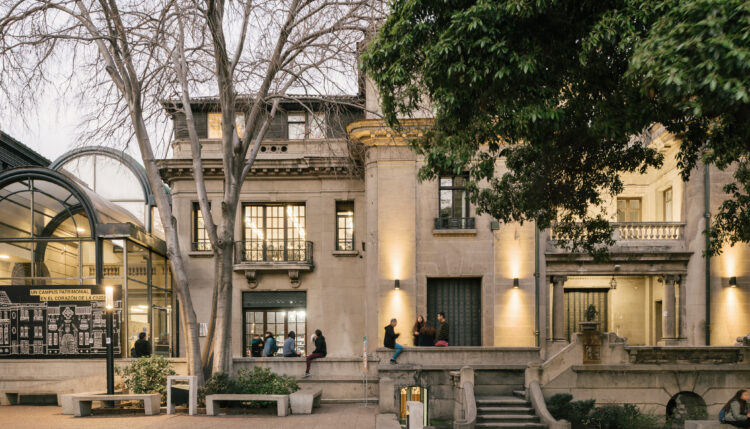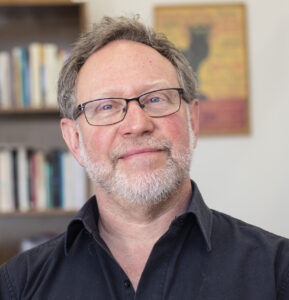
Introducing Our 2022 Conference Host: Universidad Alberto Hurtado
Chile has a rich history of high education. Universidad de Chile and Universidad Católica are among the most prestigious institutions in the continent. But there is a wide and high-quality offer, both in regional state universities and private ones, many of which are in the hands of Catholic denominations.
Such is the case of our Universidad Alberto Hurtado (UAH), named after the first Chilean Saint, a Jesuit priest who attended the poor and fought for education and rights for all. The Jesuit order was an important force in the fight for human rights during the dictatorship. Founded in 1998, UAH is mostly known for the strength of its humanistic, social sciences, psychology, law, journalism, and economy departments. It holds the first Sociology Ph.D. program in Chile and its researchers and professors are active in the social and political debates in the country.
UAH is part of a network of 200 Jesuit institutions in 65 countries, on five continents. These include world-renowned universities with whom UAH has signed cooperation agreements that facilitate joint initiatives and student and faculty exchange. It has six Schools & Departments (“Facultades”), and offers five doctoral programs and over 30 master´s programs. Undergraduate enrollment is over 7,000, plus approximately 2,000 graduate students.
Our Journalism Department
The Journalism Department at UAH celebrated its twentieth anniversary in 2021. We have a well-known undergraduate program: our former students work in almost every media outlet in Chile. We have one master’s program (in narrative non-fiction writing) and two post-graduate programs. Our faculty is comprised of widely respected practitioners of narrative and investigative reporting, digital and audiovisual journalism, as well as scholars in various academic fields. Since 2003, our department organizes and hosts the Excellence in Journalism Prize, the main award for work published every year in Chile (a small yet proud Pulitzer-type prize in the country). Every year we publish the Best Chilean Journalism series and we are currently publishing the volumes of the Historical Anthology of Chilean Crónica.
The Downtown Area, Home to Our University
The Universidad Alberto Hurtado is located in a historic neighborhood full of remarkable architecture and right at the center of Santiago. Its main entrance is half a block away from the main Santiago avenue, Alameda Bernardo O’Higgins. The presidential palace La Moneda is one metro station away. Four of the other main Santiago universities (Universidad de Chile, Universidad Católica, Universidad de Santiago and Universidad Diego Portales) are reachable with a 10-minute stroll. All the departments and the student life are within a three-block area right at the entrance to one of the busiest metro stations: Los Héroes (lines 1 and 2). There are fine eateries and shops around the area. At the School of Journalism, we consider our location one of the best assets for students learning to report the city buzz.
How to Travel to the UAH
It’s easy: Los Héroes is the center of public transportation lines in Santiago. The two main metro lines cross half a block from our door, and most bus lines crisscross Alameda. There are black and yellow taxis and the city is full of both Didi and Uber cars. A good number of drivers understand English. The city is one of the safest in Latin America. However, like almost everywhere, you must keep your eyes wide open and do not wave your mobile phone carelessly. It is a very busy area at the dead center of town.
Image Credit: cover, Foto_UAH: De Mvaleriav – Trabajo propio, CC BY-SA 4.0, https://commons.wikimedia.org/
 Roberto Herrscher is an Argentine writer, journalist and professor of journalism at the Universidad Alberto Hurtado in Chile. He also directs the Post Graduate Degree Program in Narrative Non-Fiction.Herrscher is the author of Los viajes del Penélope (Tusquets, 2007); Periodismo narrativo (Barcelona University Press, 2012); El arte de escuchar (Barcelona University Press, 2015); Crónicas bananeras (Tusquets, 2021) and Contar desde las cosas (Ed. Carena, Spain, 2021).
Roberto Herrscher is an Argentine writer, journalist and professor of journalism at the Universidad Alberto Hurtado in Chile. He also directs the Post Graduate Degree Program in Narrative Non-Fiction.Herrscher is the author of Los viajes del Penélope (Tusquets, 2007); Periodismo narrativo (Barcelona University Press, 2012); El arte de escuchar (Barcelona University Press, 2015); Crónicas bananeras (Tusquets, 2021) and Contar desde las cosas (Ed. Carena, Spain, 2021).